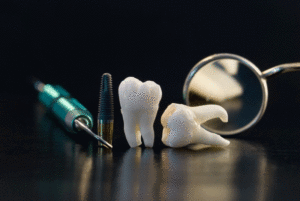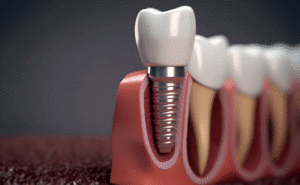Tooth enamel is one of four major tissues that make up teeth. However, unlike the other three major tissues – dentin, cementum and dental pulp – tooth enamel is the part of the tooth that is visible, existing over the crown. Despite its classification as the hardest substance in the human body, it can easily erode and decay, which typically leads to dental repair work.
Here’s a closer look at tooth enamel by answering some frequently asked questions from the patients that we see on a regular basis:
What does tooth enamel do?
Tooth enamel isn’t just for show. In fact, its primary purpose is to protect the teeth from everyday grinding, chewing, biting and chomping. But that’s not all it does – it also serves as insulation from both temperatures and chemicals.
What causes enamel erosion and damage?
Plain and simple, tooth enamel erosion occurs when acids and plaque wear away at the teeth. This can occur from things like a high-sugar diet, poor oral hygiene and care, acid reflux, bulimia, prescription or over-the-counter medications, eating disorders, low saliva flow, genetics and even environmental factors such as stress.
What are some signs of tooth enamel erosion?
There are several warning signs to look out for. One is yellowing teeth, as it is indicative of the enamel wearing thin and the darker dentin tissue of the tooth showing through. Another is sensitivity to hot, cold or sweet drinks, as tooth enamel serves as an insulator and protector. Chips, cracks, pits and indentations are further evidence that may suggest damage to tooth enamel tissue.
How can I prevent damage to tooth enamel?
The best way to prevent tooth enamel decay is to practice good oral health and hygiene. See the dentist every six months for a regular cleaning to minimize plaque buildup, brush and floss at least two times per day and use a fluoride-based toothpaste. Studies show that fluoride-based toothpastes actually strengthen and protect tooth enamel. In addition to brushing and flossing properly and regularly, it’s also worth noting that dietary adjustments can help prevent tooth enamel decay. Trim sugary sodas and drinks from your diet, chew sugar-free gum if you are going to chew gum at all, cut back on candy and sweets and make sure that you’re consuming lots of different, healthy minerals to ensure that your saliva is helping and not harming the tooth enamel tissue.
What happens if tooth enamel decay is discovered by my dentist?
Unlike a broken bone or cut to the skin, tooth enamel won’t heal on its own. So if tooth enamel decay is evident, it won’t get better without professional help. That’s where a dentist comes into play, as there are several options to treat tooth enamel decay. If the decay is diagnosed early enough, then a fluoride treatment may be all that is deemed necessary to prevent further decay. Other options include traditional fillings. Dental veneers may also be applied to the front of the tooth to restore its white appearance and cover stained, thinned, eroded, chipped or cracked teeth. Additionally, for uneven, jagged teeth, crowns can be fabricated to restore the tooth to its natural shape. While the extent of enamel restoration varies based on how advanced the damage is, generally speaking a patient will return for a series of follow up appointments with the dentist to continue to restore and treat the damage.
For more information on tooth enamel and tooth enamel decay, contact the office of Dr. Richard Caven today.


